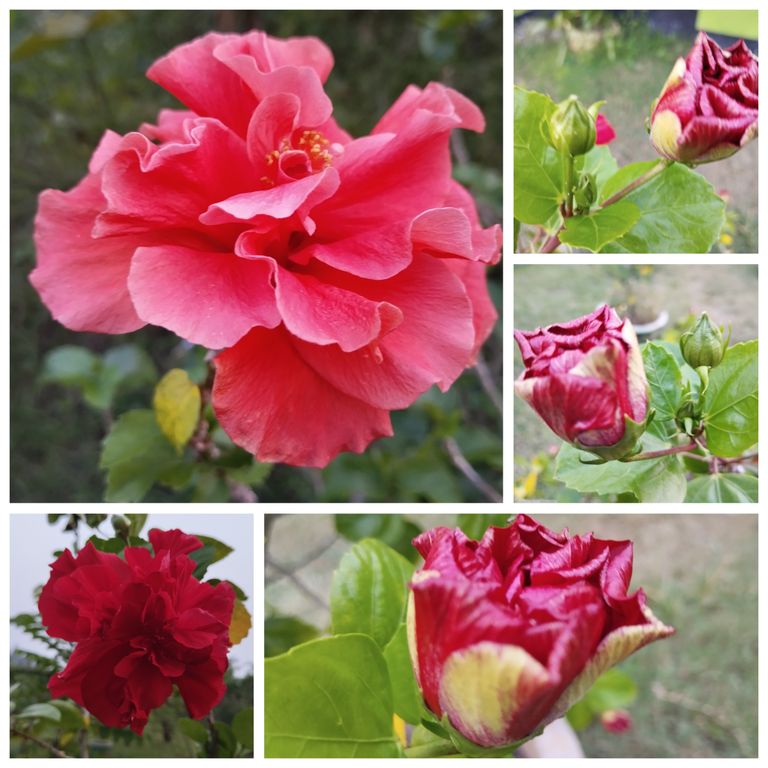
Hibiscus Flower Cultivation: A Comprehensive Guide.
The hibiscus flower, also known as the “Jaba” flower in South Asia, is popular for its large, colorful blooms and medicinal properties. It thrives in tropical and subtropical climates and is grown for both ornamental and therapeutic purposes. In this blog, we will delve into the complete process of hibiscus cultivation, from selecting the right variety to post-harvest care, with a focus on best practices for optimal growth and yield.
- Choosing the Right Variety
There are many species of hibiscus, each with its unique characteristics. Some common types include:
Hibiscus rosa-sinensis: The most common variety, often seen in gardens and parks.
Hibiscus sabdariffa: Known for its edible calyces, used in teas and beverages.
Hibiscus syriacus: A hardy variety, typically used as ornamental plants in temperate regions.
When selecting a variety, consider the purpose of cultivation. If you are growing hibiscus for ornamental purposes, Hibiscus rosa-sinensis is an excellent choice. For commercial use, especially for its calyx (used in beverages), Hibiscus sabdariffa would be more suitable.
- Climate and Soil Requirements
Hibiscus plants thrive in warm, tropical, and subtropical climates. Ideal temperatures for growth range between 24°C to 30°C (75°F to 86°F). These plants require plenty of sunlight, at least 6 to 8 hours of direct sun daily.
Soil: Hibiscus prefers well-drained, loamy soil with a pH level between 6.0 to 7.0. The soil should be rich in organic matter, which helps retain moisture while providing the necessary nutrients. Avoid heavy clay or waterlogged soils, as they can hinder root development.
- Propagation Methods
Hibiscus can be propagated in three main ways: seeds, cuttings, and grafting.
Seeds: Though hibiscus can be grown from seeds, this method is often slow. The seeds should be soaked in water for about 24 hours before planting to soften the outer shell and encourage germination. Seed-grown plants may take longer to bloom.
Cuttings: This is the most common method of propagation. Select healthy, mature stems from a mother plant, cut them into 6-8 inch sections, and plant them in a well-draining mix of sand and compost. Roots will develop within 4 to 6 weeks.
Grafting: This technique is used to combine the best traits of two plants. The scion (the upper part of one plant) is attached to the rootstock of another. It is mostly used in commercial cultivation to increase disease resistance and improve flower quality.
- Planting Process
Site Selection: Choose a location that gets plenty of sunlight and has good air circulation. Hibiscus should be planted in an area where water can easily drain to avoid root rot.
Spacing: Space the plants at least 2 to 3 feet apart to allow them to spread without competition. This spacing is crucial for air circulation, reducing the risk of fungal infections.
Planting Depth: Dig a hole about twice the width of the root ball but not deeper than the plant’s height in the pot. Loosen the roots before placing the plant in the hole. After placing the plant, fill the hole with soil and lightly press around the base.
Watering: Water the plants immediately after planting. Hibiscus needs consistent moisture but should not be waterlogged. Water when the top inch of soil feels dry.
- Watering and Fertilization
Watering: Hibiscus requires regular watering, especially during dry periods. The soil should remain moist, but not overly saturated. Watering should be done early in the morning or late in the evening to reduce evaporation.
Fertilization: Hibiscus is a heavy feeder and requires regular fertilization. Use a balanced fertilizer (NPK 10-10-10) every 4 to 6 weeks during the growing season (spring and summer). Organic compost or manure can also be added to the soil to improve fertility. Avoid fertilizers high in phosphorus, as hibiscus is sensitive to it.
- Pruning and Maintenance
Pruning: Regular pruning helps maintain the shape of the plant and promotes bushier growth. Prune the plants in early spring by removing dead or damaged branches. This encourages new shoots and increases flower production.
Pest Control: Common pests affecting hibiscus include aphids, whiteflies, and spider mites. Use organic insecticidal soap or neem oil to control infestations. Regularly inspect the plants for signs of pests and diseases, such as yellowing leaves, deformed flowers, or stunted growth.
Disease Management: Hibiscus can be prone to fungal diseases like powdery mildew and root rot. Ensure proper spacing between plants and avoid overhead watering to minimize fungal infections.
- Flowering and Harvesting
Hibiscus flowers are typically ready to bloom within 2 to 3 months after planting. The blooms are short-lived, often lasting only a day, but a healthy plant will continue producing flowers throughout the growing season.
For Hibiscus sabdariffa, the calyxes are harvested after the flowers have withered. The calyxes should be picked when they are still tender, typically 3 weeks after the flower falls off. These are commonly used in making hibiscus tea, jams, and syrups.
- Post-Harvest Care
After harvesting, dry the calyxes in a well-ventilated area for a few days. Once fully dried, store them in an airtight container to prevent moisture from affecting their quality. If you are cultivating hibiscus for ornamental purposes, regular deadheading (removing spent blooms) can encourage further flowering and keep the plant looking vibrant.
- Common Challenges in Hibiscus Cultivation
Overwatering: One of the most common mistakes in hibiscus cultivation is overwatering, which leads to root rot. Always check the soil before watering to ensure it has dried out slightly.
Nutrient Deficiency: Yellowing of leaves can be a sign of nutrient deficiency, particularly nitrogen. Regular fertilization and adding organic matter to the soil can remedy this issue.
Cold Stress: Hibiscus plants are sensitive to cold and may suffer if exposed to temperatures below 10°C (50°F). In cooler climates, consider growing hibiscus in pots so they can be brought indoors during winter.
- Uses of Hibiscus
Hibiscus is not only a beautiful ornamental plant but also has several uses:
Medicinal Uses: Hibiscus tea is rich in antioxidants and is known for its benefits in lowering blood pressure and boosting liver health.
Culinary Uses: The calyces of Hibiscus sabdariffa are used to make beverages, jams, and even candies.
Cosmetic Uses: Hibiscus extracts are used in hair care products due to their potential to promote hair growth and prevent premature graying.
Conclusion
Cultivating hibiscus can be both rewarding and relatively easy with the right knowledge and practices. Whether you’re growing it for its stunning flowers, health benefits, or commercial purposes, following these steps will help ensure that your hibiscus plants thrive. With proper care and attention, your garden or farm will be graced with vibrant blooms throughout the growing season. Happy gardening.
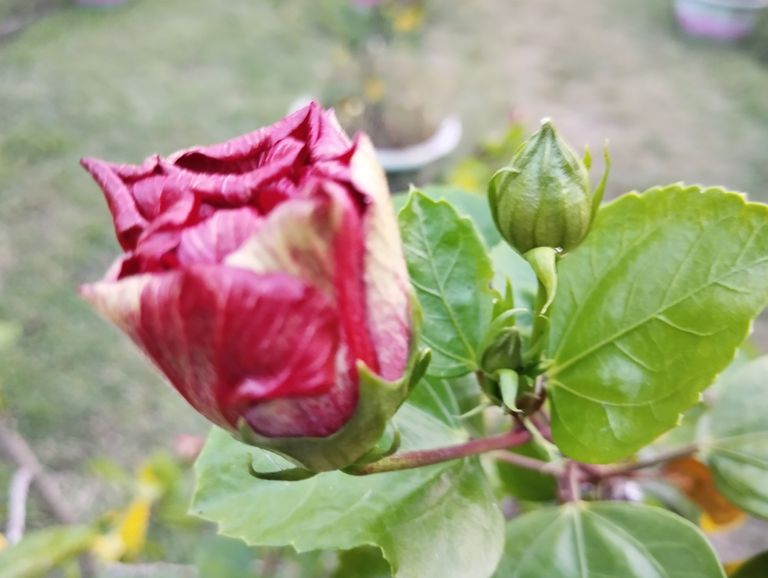
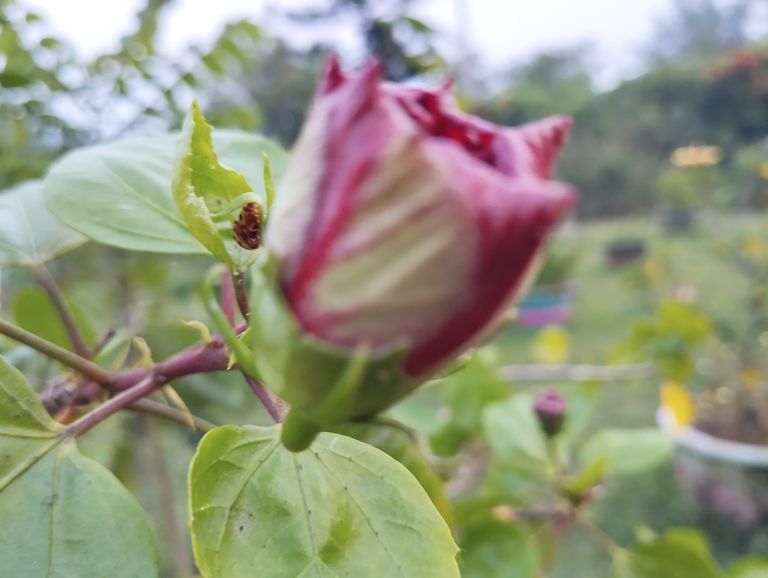
Common Diseases of Hibiscus (Jaba Flower) and Their Management
The Hibiscus, known as Jaba in Bengali, is a widely adored flowering plant, known for its vibrant colors and aesthetic appeal. It can grow in both tropical and subtropical regions, making it popular in many countries, including India and Bangladesh. However, like any other plant, hibiscus is prone to several diseases that can affect its health and beauty. In this blog, we will discuss the most common diseases affecting hibiscus plants and how to manage them effectively.
- Powdery Mildew
Powdery mildew is a common fungal disease that affects many plants, including hibiscus. It appears as a white, powdery substance on the leaves, stems, and buds of the plant. Although it does not kill the plant immediately, it weakens it by reducing its ability to photosynthesize, ultimately stunting its growth.
Symptoms:
White or gray powder-like spots on leaves, stems, and buds.
Curling or distorted leaves.
Stunted growth and flower production.
Causes:
High humidity and poor air circulation.
Overcrowded plants.
Warm and dry conditions, which favor the growth of fungal spores.
Management:
Ensure proper spacing between plants to improve air circulation.
Prune affected areas and dispose of infected leaves and stems.
Apply a fungicide, such as sulfur-based or neem oil, to control the spread.
Avoid overhead watering to keep the foliage dry.
- Leaf Spot Disease
Leaf spot is another fungal disease that causes dark spots on the leaves of hibiscus plants. It can lead to leaf drop, which weakens the plant over time. This disease is caused by various fungi, including Cercospora and Phyllosticta species.
Symptoms:
Dark brown or black spots on the leaves.
Yellowing of the leaves surrounding the spots.
Premature leaf drop.
Causes:
Overwatering or poor drainage.
High humidity and warm temperatures.
Infected soil or contaminated gardening tools.
Management:
Remove and destroy affected leaves to prevent the disease from spreading.
Ensure proper drainage and avoid overwatering.
Use fungicides such as copper-based sprays to treat the disease.
Sterilize gardening tools before and after use.
- Root Rot
Root rot is a serious condition that occurs when the roots of the hibiscus plant become waterlogged and start to decay. This disease is caused by soil-borne fungi, such as Phytophthora and Pythium. If left untreated, root rot can kill the plant.
Symptoms:
Yellowing leaves that wilt and fall off.
Soft, mushy roots that are dark in color.
Slow or stunted growth.
Foul smell from the soil.
Causes:
Overwatering or poorly drained soil.
Heavy or compacted soil that retains too much moisture.
Fungal spores present in the soil.
Management:
Ensure proper drainage by using well-draining soil or adding sand or perlite.
Water the plant only when the top inch of soil is dry.
Remove the affected plant from the soil, trim the rotten roots, and replant it in fresh, well-drained soil.
Apply fungicide to the soil to kill any remaining fungal spores.
- Aphids
Aphids are small, sap-sucking insects that can cause significant damage to hibiscus plants. They are typically green, black, or yellow in color and cluster on the undersides of leaves, where they feed on plant sap. While aphids themselves don’t spread disease, they can weaken the plant and cause sooty mold growth.
Symptoms:
Distorted or curled leaves.
Sticky honeydew (a sugary substance) on leaves.
Sooty mold on the plant.
Stunted growth and yellowing leaves.
Causes:
Infestation by aphid colonies.
Overfertilization, which leads to rapid growth and attracts aphids.
Lack of natural predators like ladybugs.
Management:
Spray the plant with a strong stream of water to dislodge the aphids.
Introduce beneficial insects like ladybugs to control the aphid population.
Use insecticidal soap or neem oil to treat the infestation.
Prune heavily infested parts of the plant.
- Spider Mites
Spider mites are tiny, sap-sucking pests that can cause severe damage to hibiscus plants. These mites thrive in hot, dry conditions and are often found on the undersides of leaves. They spin fine webs on the plant, giving it a dusty appearance.
Symptoms:
Tiny yellow or white speckles on the leaves.
Fine webbing on the undersides of the leaves.
Leaves turning yellow, drying out, and falling off.
Stunted plant growth.
Causes:
Hot, dry conditions that favor spider mite populations.
Overuse of chemical pesticides, which can kill natural predators of spider mites.
Poor humidity levels.
Management:
Increase humidity around the plant by misting or placing a tray of water nearby.
Wash the plant with a strong stream of water to remove spider mites.
Use insecticidal soap, neem oil, or miticides to control spider mites.
Remove heavily infested leaves to prevent the spread.
- Botrytis Blight
Botrytis blight is a fungal disease that affects the flowers, leaves, and stems of hibiscus plants. It is caused by the fungus Botrytis cinerea, which thrives in cool, moist conditions. This disease primarily attacks the flowers, causing them to wilt and turn brown.
Symptoms:
Brown or gray spots on the petals.
Flowers wilting and falling off prematurely.
Fuzzy gray mold on affected parts of the plant.
Leaf spots and stem cankers.
Causes:
High humidity and poor air circulation.
Cool, damp weather conditions.
Overcrowded plants or excessive watering.
Management:
Remove and destroy infected flowers, leaves, and stems.
Avoid watering the plant in the late evening to reduce moisture buildup overnight.
Improve air circulation around the plant by spacing them appropriately.
Apply fungicides like copper or sulfur to control the spread of the disease.
- Nematodes
Nematodes are microscopic worms that can damage the roots of hibiscus plants, leading to poor nutrient absorption and overall weakening of the plant. Nematode infestations are difficult to detect until significant damage has occurred.
Symptoms:
Stunted growth and yellowing of leaves.
Root galls or swollen roots.
Wilting despite adequate water and nutrients.
Poor flowering.
Causes:
Infested soil or water.
Poor sanitation practices in the garden.
Management:
Use nematode-resistant varieties of hibiscus, if available.
Rotate crops and avoid planting hibiscus in the same spot year after year.
Solarize the soil by covering it with clear plastic to kill nematodes with heat.
Apply organic matter, such as compost, to encourage beneficial microbes that can help control nematodes.
Conclusion
Caring for hibiscus plants involves not only providing them with the right environment but also being vigilant about diseases and pests. By understanding the symptoms and causes of common hibiscus diseases, you can take early action to prevent or manage these problems. Regularly inspecting your plants, maintaining proper sanitation, and using appropriate treatments will help keep your hibiscus healthy and blooming beautifully all year round.
By following these preventive and corrective measures, you can ensure that your hibiscus remains a vibrant and attractive addition to your garden.

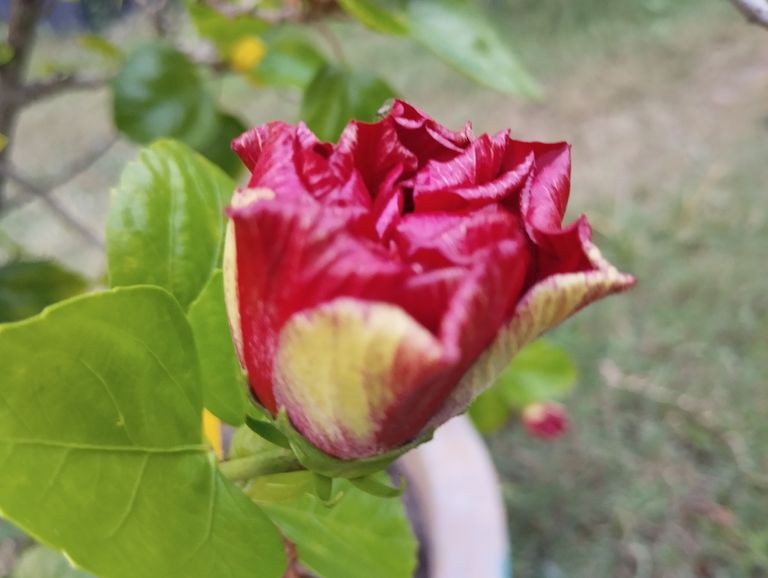
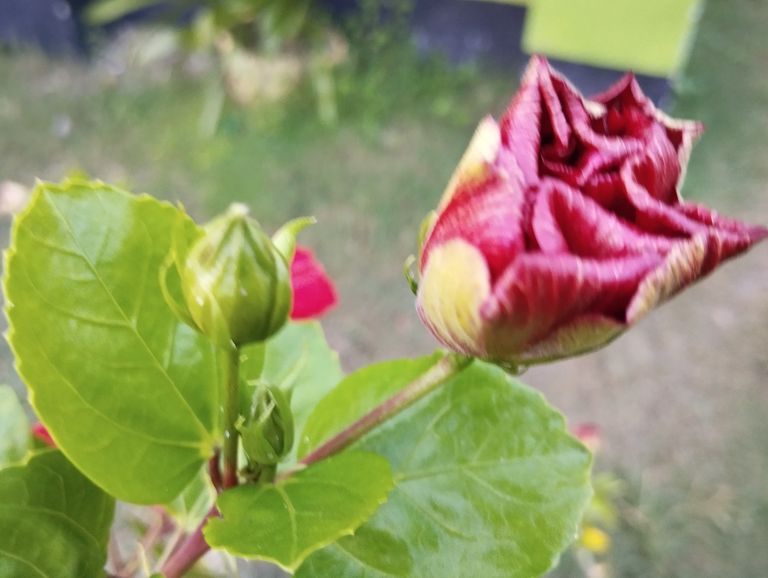
The Timeless Beauty of the Hibiscus Flower: A Nature's Masterpiece
Flowers have long been associated with beauty, grace, and elegance, each species showcasing its own unique charm. Among them, the hibiscus flower—locally known as joba in many parts of the world, particularly in India and Bangladesh—stands out as a symbol of vibrancy and allure. With its bold, bright petals and captivating presence, the hibiscus flower holds a special place in the world of flora, admired not only for its appearance but also for its cultural and medicinal significance.
- A Symphony of Colors
One of the most striking features of the hibiscus flower is its wide array of colors. While the most commonly known hibiscus is a radiant red, these flowers also come in various shades of white, yellow, pink, orange, and even purple. Each color brings its own emotional resonance and aesthetic appeal.
Red Hibiscus: The red joba is a symbol of passion, love, and energy. It has an eye-catching, fiery intensity that makes it a popular choice in gardens and floral arrangements.
Yellow Hibiscus: Often associated with happiness and joy, the yellow variety brightens up any space, reflecting the warmth of the sun.
Pink Hibiscus: The pink hibiscus exudes grace and elegance, representing love, gentleness, and femininity.
White Hibiscus: Symbolizing purity and peace, the white hibiscus carries an aura of calmness, often used in spiritual practices.
The sheer variety in color ensures that the hibiscus flower never goes unnoticed, offering an array of choices for both ornamental and symbolic purposes.
- The Unique Shape and Structure
What truly sets the hibiscus flower apart from others is its distinctive shape. The large, trumpet-like bloom with its protruding stamens gives it a bold and dramatic look. The flower usually consists of five or more petals, creating a symmetrical beauty. This shape, coupled with the soft texture of the petals, gives the hibiscus an almost regal appearance, drawing attention to its every curve and fold.
The central stamen—often a contrasting color to the petals—adds a focal point to the flower's design, making it not just a visual delight but also a source of fascination for pollinators such as butterflies and bees.
- Hibiscus in Cultural Contexts
The hibiscus flower is not only admired for its beauty but is also deeply entrenched in various cultural traditions. In many South Asian cultures, particularly in Hinduism, the red hibiscus is considered sacred and is often offered in prayers to the goddess Kali and Lord Ganesha. Its vibrant red color is believed to symbolize the goddess’s fiery and powerful nature, making it a prominent feature in religious rituals and offerings.
In other parts of the world, particularly in Hawaii and other Pacific islands, the hibiscus is used as a symbol of hospitality and is worn as a decorative flower by women. When a woman wears a hibiscus behind her ear, it often signifies her availability for marriage, adding a layer of romantic symbolism to this already beautiful bloom.
- Medicinal Properties of Hibiscus
Beyond its ornamental and cultural importance, the hibiscus flower is also known for its numerous medicinal properties. It has been used in traditional medicine for centuries across various cultures. One of the most common uses of hibiscus is in the form of hibiscus tea, made from dried hibiscus petals.
Hibiscus tea is celebrated for its health benefits, including:
Rich in Antioxidants: Hibiscus tea is packed with antioxidants that help combat free radicals in the body, reducing oxidative stress and promoting overall health.
Supports Heart Health: Studies suggest that hibiscus tea may help lower blood pressure and cholesterol levels, making it beneficial for cardiovascular health.
Aids Digestion: Hibiscus tea has been used as a natural remedy to soothe digestive issues and improve digestion.
Anti-inflammatory and Antibacterial Properties: The flower is believed to have anti-inflammatory and antibacterial properties, which help boost the immune system and fight off infections.
In Ayurvedic and traditional Chinese medicine, the hibiscus flower is often used to treat ailments ranging from high blood pressure to liver disorders. Its cooling properties are particularly valued in these systems of medicine for treating heat-related conditions.
- Hibiscus in Art and Aesthetics
The allure of the hibiscus flower has also inspired countless artists, designers, and creatives. Its vibrant colors, delicate petals, and bold structure make it a popular subject in paintings, textiles, and fashion. From tropical prints on clothing to intricate designs in ceramics and pottery, the hibiscus has left its mark on the world of art.
In recent years, the flower has also gained popularity in the beauty industry, with hibiscus extracts being used in skincare products. Known for its ability to improve skin elasticity and provide a natural glow, hibiscus has earned the nickname "Botox plant", further solidifying its place in the realm of beauty.
- The Hibiscus in Gardens
For gardening enthusiasts, the hibiscus flower is a true delight. Its bright, bold blooms make it a stunning addition to any garden, while its relatively easy care requirements make it a favorite among both amateur and experienced gardeners. Hibiscus plants thrive in warm climates with plenty of sunlight, and they can be grown both in pots and in the ground.
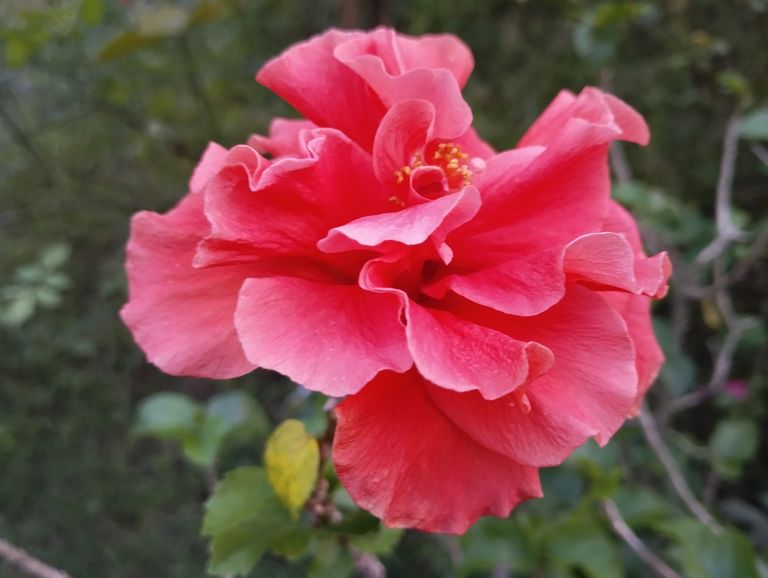
1 votes
1 votes
Congratulations, your post has been upvoted by @dsc-r2cornell, which is the curating account for @R2cornell's Discord Community.
Enhorabuena, su "post" ha sido "up-voted" por @dsc-r2cornell, que es la "cuenta curating" de la Comunidad de la Discordia de @R2cornell.
like this flower colour 😍